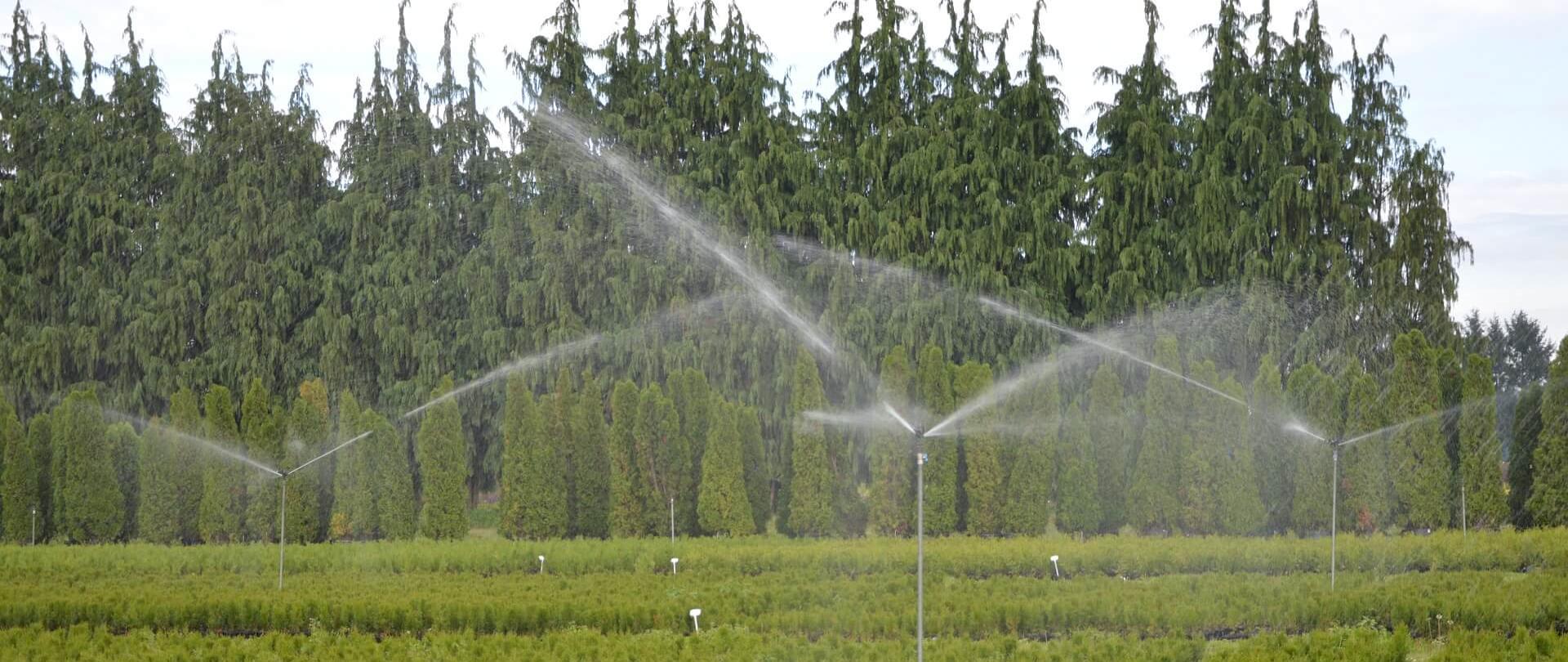Integrated irrigation
Prevention against drought consequences. Precise control of irrigation of ornamental plant nurseries

 Project title
Project title
Integrated irrigation of ornamental plant nurseries
 Name of Beneficiary/Beneficiaries
Name of Beneficiary/Beneficiaries
Institute of Horticulture in Skierniewice
SensorTech sp. z o.o.
 Name of programme
Name of programme
APPLIED RESEARCH PROGRAMME
 Competition
Competition
3rd competition under the Applied Research Programme, pathway A
 Project value
Project value
PLN 2,942,250.00
 Funding value
Funding value
PLN 2,774,500.00
 Project delivery period
Project delivery period
1 January 2015 – 31 December 2017
Meet our team

View the results of our work




What problem is addressed by the project?
Irrigation is a necessary measure in intensive horticulture for two reasons: first, some plants are grown under cover, with irrigation being the only source of water, and second, highly intensive horticulture does not allow for production to be affected by drought given the often considerable expenditures involved (related to production technology, planting material, storage, etc.). Irrigation has virtually always been the focus of our Institute. Precise plant irrigation is an extremely important element of the natural environment protection policy.
Changing weather, horticulturalists’ needs and the research focus of our Institute (formerly two independent institutes – the Pomiculture Institute and the Truck Farming Institute – now merged as the Horticulture Institute and Irrigation Laboratory) have naturally combined to form an integrated objective of promoting advancement and rationalisation in the process of supplying plants with water. Drought has become quite a trendy subject in recent years. “Droughts of the century” have been increasingly frequent, occurring almost every year. The climate changes we have experienced mainly concern increased temperatures which naturally cause increased plant water needs.
Our project comprises two elements, or parts. The first, and most universal, involves developing a device to control irrigation based on climate parameters. The resulting streamlined estimation could be very important and useful for all kinds of cultivation – from agriculture to horticulture, to managing urban green spaces. The second element is about controlling irrigation in container cultivation – from small pots to large nursery containers. And it is the container cultivation of ornamental plants that was our initial focus.
Our project is globally unique since it involves the development of a device to control irrigation based on an algorithm designed to estimate plants’ demand for water on an hourly scale. So far, it has been common practice to estimate evapotranspiration for individual days. Based on available literature, we have developed a calculation model which, in conjunction with our prototype controller, provides accurate data on plants’ demand for water for each consecutive hour. This is particularly useful for plants grown in small containers, where a single irrigation measure per day is clearly insufficient. The controller estimates water demand and adjusts irrigation frequency accordingly, depending on how plants' water needs change in the course of the day. This is the aspect we are very proud of.
Who uses the project results?
The limited resources of water in Poland, as well as in Europe at large, can become a significant barrier to economic development. Rational water management is part of EU’s policies to support environmental protection and define standards in this regard. As shown by our surveys, few horticulturalists in Poland use reliable criteria to estimate irrigation needs, leading to excessive use of not only water and fertilisers, but also energy. I hope that our project will, inter alia, change that. The obtained results are directly useful in container cultivation of ornamental plants where irrigation is a must. The universality of the models of determining plant water needs, as developed in our project, makes them usable also in other plant production areas.
What was the greatest challenge during project implementation?
Our biggest challenge was to develop and construct irrigation control prototypes. We also conducted research into regulated irrigation deficits, which proved quite troublesome in the very changeable weather conditions.
Our advice for other applicants
Prior to submitting a project application, you should closely analyse it in terms of the possible threats and difficulties that may arise in the course of project implementation. It seems advisable to read the application again, pretending that you are acting as its reviewers. We had good cooperation with NCBR, and the funds helped us to carry out a really interesting and advanced project, allowing our team to spread its wings and Skierniewice to remain the capital of Polish horticulture.